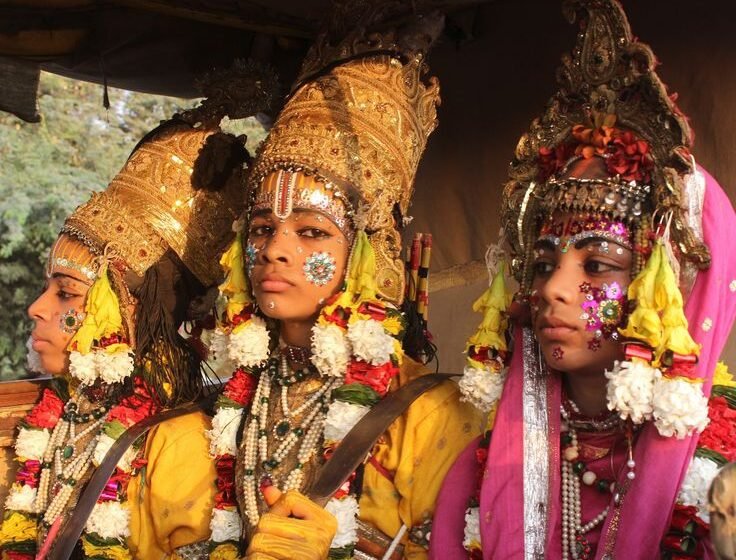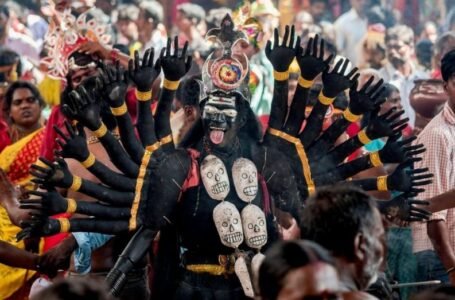Ramlila at Ramnagar, Varanasi: An Ever-Living Tradition of Love and Culture

Every year, in the spiritual heart of India, the town of Ramnagar near Varanasi hosts one of the most unique cultural and spiritual spectacles in the world—the Ramlila. This centuries-old tradition brings the revered tale of the Ramayana to life with fervor and devotion, capturing the hearts of thousands who attend it each year. More than just a performance, the Ramlila at Ramnagar represents an uninterrupted living tradition that has continued for over two centuries, blending faith, performance art, and cultural heritage into one awe-inspiring event.

The Ramlila at Ramnagar is widely regarded as the oldest continuously performed Ramlila in the world, and its grandeur has earned it international fame. With its elaborate sets, expansive staging, and deeply spiritual undertones, the event offers a profound glimpse into a synthesis of devotion and artistry that is unparalleled. This annual performance goes beyond entertainment; it is a spiritual pilgrimage for many, a way to experience the divine story of Lord Ram, and a means of reaffirming timeless virtues like duty, righteousness, and compassion.

The Origins of Ramnagar Ramlila
The origins of the Ramnagar Ramlila trace back to the early 19th century, when it is believed to have been initiated by Kashi Naresh Maharaja Udit Narayan Singh, the king of Varanasi. The Kashi Naresh, also known as the Maharaja of Varanasi, was a devotee of Lord Ram, and his vision was to create an immersive experience of the Ramayana for the local people and visitors alike. Over the years, this modest event grew into a grand spectacle of epic proportions, stretching across the entire town of Ramnagar.
Located on the banks of the Ganges River, just across from Varanasi, Ramnagar becomes a vast, open-air stage during the month of Ashwin (September-October) when the Ramlila is performed. The entire town is transformed into the mythological landscape of the Ramayana, with different scenes being enacted at various locations across Ramnagar. These settings, which include the palace of the Kashi Naresh, forests, rivers, and fields, act as natural backdrops that enhance the authenticity and devotional zeal of the performance.

The unique feature of Ramnagar Ramlila is its all-encompassing nature. Unlike traditional theater, which is confined to a stage, the Ramlila unfolds across a wide geographical area, making the entire town a dynamic stage. This innovative use of space creates an immersive experience for the audience, who are transported into the divine world of Lord Ram. As the actors move through different locations, the audience follows, becoming part of the unfolding narrative. This blending of performance and space creates an eye-catching sense of reality, making the story of the Ramayana come alive in a way that is both spiritual and theatrical.
A Living Tradition of Devotion
The Ramnagar Ramlila is not just another cultural event; it is a living tradition that has been passed down through generations. Unlike most other Ramlilas in India, which are typically week-long affairs, the Ramnagar Ramlila stretches over a full month. Starting on the first day of the Hindu month of Ashwin, the Ramlila continues for 31 days, with different scenes from the Ramayana being performed each evening. This long duration allows for an in-depth portrayal of the epic, with each episode given ample time for detailed enactment.

One of the most remarkable aspects of this Ramlila is the dedication of the local actors who perform in it. The cast, composed of amateur actors from the local community, takes on the roles of the Ramayana characters with deep sincerity and devotion. For them, this is not just a performance but an act of religious duty. Many of these actors have been playing the same roles for years, and their deep understanding of the characters they portray adds a layer of authenticity to the performance.
At the heart of the Ramnagar Ramlila is the portrayal of Lord Ram, the embodiment of virtue and righteousness. The role is traditionally played by a young boy, chosen for his purity and innocence. What makes the performance even more captivating is the absence of modern technological aids. There are no microphones, amplifiers, or special effects—only the natural vocal expressions and powerful oratory skills of the actors. The audience, spread across vast open spaces, listens intently to the actors’ voices as they narrate the timeless story of Lord Ram.

This simplicity and adherence to traditional methods lend a certain purity to the performance. It is a reminder that even in a world dominated by technology and modernity, there is a space for ancient forms of storytelling that rely solely on the human voice and gesture to convey deep spiritual messages.
Patronage of Kings and Royal Involvement
One of the key factors that have kept the Ramnagar Ramlila alive and thriving for over 200 years is the continued patronage of the royal family of Varanasi. The Kashi Naresh, although no longer a political figure, plays an integral role in the Ramlila. He acts as the ceremonial head of the event, presiding over the performances from a royal chariot or sometimes an elephant. His presence adds an air of kingly dignity and spiritual authority to the proceedings, linking the Ramlila to both the temporal and the spiritual realms.

The Kashi Naresh’s involvement in the Ramlila is not merely symbolic. He is deeply revered by the people, and his presence at the event lends it a sense of continuity and tradition. The Maharaja’s role is not just as a spectator but as an active participant in the rituals and ceremonies that accompany the performances. This blending of royalty, religion, and culture is one of the defining features of the Ramnagar Ramlila, making it a unique event that stands apart from other Ramlilas in India.
The Role of the Audience
In the Ramnagar Ramlila, the audience is not merely a passive spectator but an active participant in the performance. Devotees from all over India and the world travel to Ramnagar to witness this grand spectacle. For many, attending the Ramlila is a sacred pilgrimage, a journey to immerse themselves in the divine narrative of Lord Ram. The audience follows the actors from one location to another, becoming part of the unfolding story.

This participatory nature of the event creates a strong sense of community among the audience members. As they move from one scene to another, they bond over their shared devotion and love for the Ramayana. The audience’s engagement with the performance goes beyond mere observation; it becomes an act of worship, a way to connect with the divine and reaffirm their faith.
The Enduring Legacy of Ramnagar Ramlila
The Ramnagar Ramlila remains the same today as it was when it first began over two centuries ago. Despite the passage of time and the rapid modernization of the world, the Ramlila has retained its traditional format and devotional spirit. This is not just a cultural event; it is a living embodiment of faith and devotion that has been passed down through generations.

What makes the Ramnagar Ramlila so enduring is its ability to stay rooted in tradition while still resonating with contemporary audiences. The themes of the Ramayana—duty, righteousness, compassion, and the triumph of good over evil—are timeless, and the Ramlila serves as a powerful reminder of these values. In a world of constant change, the Ramnagar Ramlila stands as a testament to the strength of tradition and the enduring relevance of ancient stories.
The sheer scale of the production, from its elaborate sets to the minute details of the costumes and the ritualistic nature of the performance, makes the Ramnagar Ramlila one of the most unique theatrical events in the world. It is a celebration of devotion, culture, and artistry, all rolled into one.

Conclusion
The Ramlila at Ramnagar, Varanasi, is much more than just a performance—it is a spiritual journey, a living tradition that has inspired millions over the years. As the world’s oldest continuously running Ramlila, it holds a special place in the hearts of devotees and cultural enthusiasts alike. The Ramnagar Ramlila is a vibrant testimony to the power of mythology, devotion, and theatrical artistry. In this ever-evolving world, it remains a shining example of how ancient traditions can continue to thrive and inspire future generations, offering a timeless message of righteousness, duty, and compassion.


